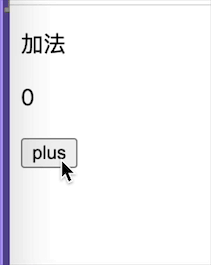React Native自己实现的ListView还有一个隐藏功能那就是Section。Section在文档里连一句话都没有给足,但确确实实的是内置的。使用Section可以给数据分组,并且每一个Section都有一个Header。Section Header可以像iOS的TableView的Section Header一样在滑动的时候保持当前的Section Header浮动在Table View的最上部。
在iOS上,只要添加了Section和Section Header以后,Section Header的行为就一定是和iOS的TableView的Section Header 一致的。这个在Android上还没有测试。
数据源的变化
要使用Section,那么首先一开始就需要告诉数据源不仅要考虑行的变化还要考虑Section Header的变化:
const ds = new ListView.DataSource({
rowHasChanged: (r1,r2) => r1 !== r2,sectionHeaderHasChanged: (s1,s2) => s1 !== s2
});
然后就要考虑数据的变化了。之前只需要一个数组就可以完成的,现在需要数据可以明确的区分出Section。最简单的一个数据源应该是这样的:
this.state = {
dataSource: ds.cloneWithRowsAndSections({
'section1': ['1'],'section2': ['row 1','row 2','row 1','row 2']
})
};
单独的看数据是这样的一个形式:
{
'section1': ['1'],'row 2']
}
绘制的变化
在没有Section的时候,绘制很简单。只需要实现一个renderRow的方法。现在就需要考虑绘制Section Header了,方法就是renderSectionHeader。和renderRow方法一样,两个方法都是返回一个视图组件。比如:
_renderSectionHeader(data,sectionID) {
if (sectionID === 'section1') {
return null
}
return (
<View style={styles.section}> <View style={{flex: 1}}><Text>category 1</Text></View> <View style={{flex: 1}}><Text>category 2</Text></View> <View style={{flex: 1}}><Text>category 3</Text></View> </View> ); }
拼接起来
以上的内容就是使用一个Section方法都需要的只是了。非常简单,但是官网居然不把这些内容放出来。
下面贴出了ListView 部分的代码,完整代码可以移步这里。
/* * Copy Right 2016 Uncle Charlie * * @flow */
import React,{ Component } from 'react';
import {
View,Text,ListView,StyleSheet
} from 'react-native';
export default class SectionListView extends Component {
state: {dataSource: any};
constructor(props: any) {
super(props);
const ds = new ListView.DataSource({
rowHasChanged: (r1,s2) => s1 !== s2
});
this.state = {
dataSource: ds.cloneWithRowsAndSections({
'section1': ['1'],'row 2']
})
};
this._renderRow = this._renderRow.bind(this);
this._renderSectionHeader = this._renderSectionHeader.bind(this);
}
_renderRow(data,sectionID,rowID) {
let heightStyle = (sectionID === 'section1' && rowID === '0') ?
{height: 100,backgroundColor: 'white'} :
{}
return (
<View style={[styles.row, heightStyle]}> <Text>{data}</Text> </View> ); } _renderSectionHeader(data,sectionID) { if (sectionID === 'section1') { return null } return ( <View style={styles.section}> <View style={{flex: 1}}><Text>category 1</Text></View> <View style={{flex: 1}}><Text>category 2</Text></View> <View style={{flex: 1}}><Text>category 3</Text></View> </View> ); } render() { return ( <ListView style={styles.list} dataSource={this.state.dataSource} renderRow={this._renderRow} renderSectionHeader={this._renderSectionHeader} /> ); } } var styles = StyleSheet.create({ list: { marginTop: 64,},row: { height: 50,backgroundColor: 'white' },section: { height: 30,backgroundColor: 'green',flexDirection: 'row',justifyContent: 'space-between',alignItems: 'center' } });




